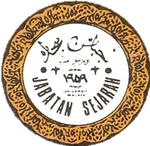DIVERSIFYING URBANITY: THE JAPANESE COMMERCIAL COMMUNITY OF PRE WORLD WAR II MANILA
DOI:
https://doi.org/10.22452/sejarah.vol26no1.6Abstract
Starting from a small group of transient peddlers and workers early in the 20th century, Manila’s Japanese commercial community became a diverse group of businessmen whose establishments contributed to the character of the city. Internal and external factors were responsible for the growth of the Japanese community in Manila that by the 1930s the commercial community numbered 250 establishments ranging from small shops to branches of big Japanese corporations such as Mitsui Bussan and Daido Boeki Kaisha (today’s Marubeni Corporation). Though the Japanese commercial community in the 20th century was a recent arrival and it was small compared to the communities of other nationalities its businessmen showed exceptional acumen that by the 1930s many things that a Filipino bought or ate passed through a Japanese merchant. Sections of Manila became known as “Manila’s Ginza” and “Little Tokyo” because of the presence of many Japanese establishments. As the decade of the thirties approached the 1940s the foreign community especially those of the Japanese faced the challenge of rising Filipino economic nationalism caused by the sentiment over the foreign domination of the Philippine economy. Instead of crumbling to the pressure the Japanese commercial community did not just survived but continued its expansion as it addressed the threats to its existence and it was prepared to defend its rights and gains through any means possible including force if necessary. This paper discusses the reasons for the growth of the Japanese businesses in Manila during the first four decades of the 20th century. It also discusses how the behavior of the Japanese commercial community in the context of rivalry between the United States and Japan and the rising Filipino nationalism.


